 Humans
Humans  Humans
Humans  Animals
Animals 10 Ways Animals Use Deception to Survive
 Movies and TV
Movies and TV 10 Misdirections Directors Used to Manipulate Actors
 Politics
Politics The 10 Boldest Coup Attempts of the 21st Century
 Weird Stuff
Weird Stuff 10 Things That Would Have Killed You in the Old West
 Books
Books 10 Pen Names More Famous Than Their Authors
 Creepy
Creepy 10 Unnerving Legends from Around the World
 Movies and TV
Movies and TV 10 Amazing Lead Actor Ideas for Superhero Movies
 Our World
Our World 10 Crazy Facts about Cycads That Might Surprise You
 Technology
Technology 10 World-Changing Examples of Turning Dumb Technology into Smart Technology
 Humans
Humans 10 Inventors Who Died Awful Deaths in Their Own Creations
 Animals
Animals 10 Ways Animals Use Deception to Survive
 Movies and TV
Movies and TV 10 Misdirections Directors Used to Manipulate Actors
Who's Behind Listverse?

Jamie Frater
Head Editor
Jamie founded Listverse due to an insatiable desire to share fascinating, obscure, and bizarre facts. He has been a guest speaker on numerous national radio and television stations and is a five time published author.
More About Us Politics
Politics The 10 Boldest Coup Attempts of the 21st Century
 Weird Stuff
Weird Stuff 10 Things That Would Have Killed You in the Old West
 Books
Books 10 Pen Names More Famous Than Their Authors
 Creepy
Creepy 10 Unnerving Legends from Around the World
 Movies and TV
Movies and TV 10 Amazing Lead Actor Ideas for Superhero Movies
 Our World
Our World 10 Crazy Facts about Cycads That Might Surprise You
 Technology
Technology 10 World-Changing Examples of Turning Dumb Technology into Smart Technology
Top 10 Forensic Fails
Forensic evidence is crucial to crime scene investigators. Witnesses may be unreliable, and memories might be foggy, but scientific evidence doesn’t lie. If handled properly, forensics can make or break any trial against dangerous criminals. The following are ten cases where shocking forensic fails bungled the case and allowed murderers to walk away from justice—or sent innocent people to prison.
10 Crime Scene Fail
1922
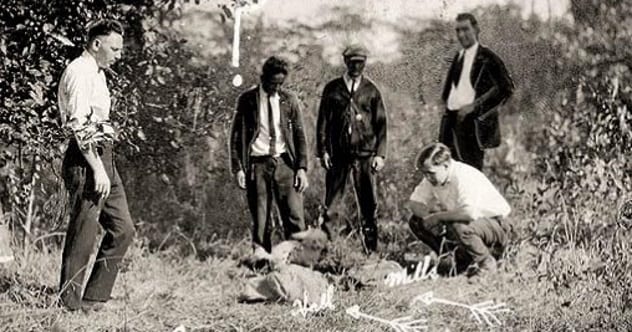
Nearly everyone in the town of New Brunswick, New Jersey, seemed to know that Reverend Edward Wheeler Hall and choir singer Eleanor Reinhardt Mills were in love. Even their spouses seemed to tolerate the affair, until the night that Edward and Eleanor were found murdered near Lovers’ Lane. Both had been shot. Eleanor’s tongue had been removed, a horrifying insult to her love of singing.
The victims were from one jurisdiction, but their bodies were found in another, leading to disagreements about which department should collect the forensic evidence. While a police power struggle ensued, reporters flocked to the site of the murder to take pictures, and civilians soon followed. Key pieces of evidence left by the killer were passed around by reporters. Meanwhile, trees, grass, and rocks from the area were snatched up by onlookers to be sold as souvenirs of the tragic slaying. Vendors camped at the site, selling balloons and soft drinks to the hundreds of visitors trampling around the crime scene.
Failure to secure the scene was just the beginning of this forensic fiasco. A card left by the killer was handled by dozens of people in the crowd, making fingerprint forensics useless in court. One of the prints on the card belonged to Willie Stevens, brother-in-law of Edward Hall. Willie owned a gun of the same caliber as the one that killed the couple, and he had complained to friends at a local pub that Edward was not giving him enough allowance from the family funds. Another witness revealed that Mrs. Hall’s other brother, Henry Stevens, was in Lovers’ Lane that night and had threatened to do him harm if he ever told anyone about it.
Mrs. Hall was the obvious mastermind. Her maid eventually told police that Mrs. Hall had bribed her to provide an alibi and that she had gone with her brothers to confront Edward and Eleanor in Lover’s Lane that night. The maid warned police that the minister’s wife had a network of spies around town to keep tabs on Edward’s affair. She was right. Not only did several key witnesses against Mrs. Hall disappear forever, but forensic evidence did as well. Prosecutors “misplaced” most of the evidence, the autopsy report, and grand jury testimony records that would have pointed toward Mrs. Hall as a suspect. A lawman’s brother was later caught trying to sell some of the documents to reporters.
One of the few witnesses brave enough to testify against Mrs. Hall was Jane Gibson, a swine herder who became known as the “Pig Lady” in the press. Gibson claimed to have heard a female voice call out, “Henry!” before the fatal shots were fired. The jury disregarded Gibson’s testimony, acquitting Mrs. Hall and her brothers of all charges. With the crime scene ransacked, the only fingerprint compromised, and most of the witnesses missing, this simple case ended up becoming a huge forensic fail for the prosecution.[1]
9 Lab Fail
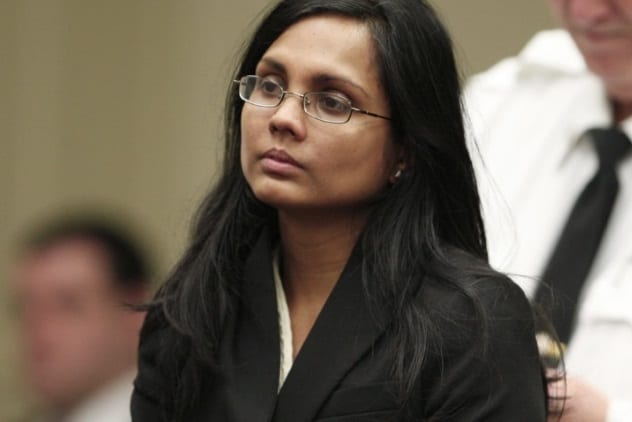
Authorities suspected something might be amiss when Massachusetts forensics chemist Annie Dookhan somehow managed to process a large volume of samples in a relatively short time. An investigation revealed that Dookhan had been “dry labbing” many of her assignments—reporting results without performing the actual tests! She then compounded the problem by testifying about her findings during criminal trials. Doohkan worked for nine years at the Department of Public Health, processing more than 60,000 samples involving 34,000 defendants.
She was also accused of taking cocaine from positive samples and adding it to negative samples to help secure convictions. Since no one could tell which tests were real, which ones were fake, or which ones she’d personally contaminated, all of Dookhan’s results became suspect. Her shoddy forensic work allowed 200 convicted defendants to be freed from custody while their cases were reviewed by officials.[2]
Dookhan was indicted on 27 charges, including obstruction of justice for tampering with evidence, perjury, and even falsifying her university degree. She served only three years in jail for her crimes and is now free, just like the dangerous “Dookhan Defendants” she put back on the streets.
8 Rape Evidence Fail
2013
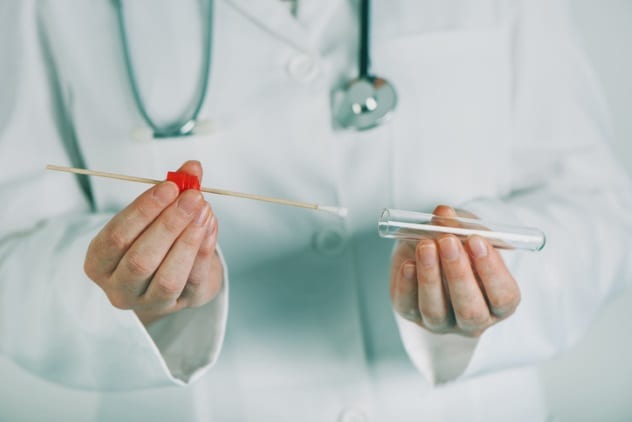
The mistakes of a single unidentified lab technician forced the New York medical examiner’s office to review 843 rape cases for DNA evidence which could have been improperly processed. Supervisors might never have caught the mistakes if not for the fact that the technician in question applied for a new training program. Problems with her collection and analysis techniques prompted further scrutiny, revealing that she had been reporting false negatives instead of false positives during chemical tests for semen detection on clothing. Other mistakes included overlooking stains, botched chemical tests, and improperly processed rape kits.[3]
In at least 26 cases, the technician missed biological evidence that could have been useful for a rape trial. In 16 cases, pieces of evidence were returned to the wrong rape kit, hindering 19 investigations. Coworkers at the medical examiner’s office had to work around the clock double-checking the fired technician’s findings. Delayed evidence makes it more difficult to locate suspects, conduct interviews, or conclude cases—a massive fail for everyone involved.
7 Forensic Data Double Fail
2007
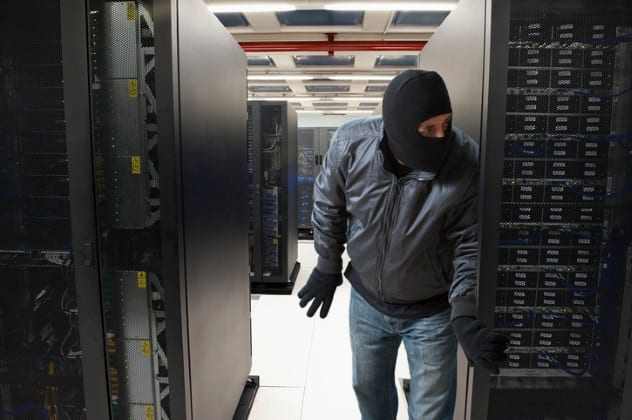
In a shocking double fail, thieves in Kent, England, had very little trouble stealing a computer server from Forensics Telecommunications Services in 2007. The large server contained vital evidence for multiple criminal cases. The theft proved pointless, however, when police discovered that all of the information on the servers involved old cases that had already been tried in court.
Once the thieves discovered that the information was useless, they had no idea what to do with the server or how to abandon it without arousing suspicion. Police used forensic evidence found at the scene to track the thieves, which led to their houses. Inside one of them, the server was discovered. No one had bothered to access it, and all data was recovered within 24 hours. This was probably the only case on record where criminals trying to steal old forensics were caught using new forensics.[4]
6 Blood Fail
1995
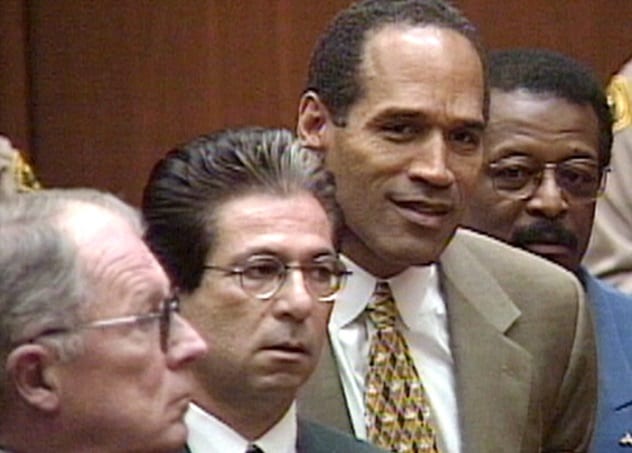
Few cases in history have been more focused on forensic evidence than the O.J. Simpson trial. In 1995, Simpson was arrested and charged with the double homicides of Nicole Simpson and Ron Goldman. The world watched every detail of the case on Court TV, which highlighted the many mistakes of forensics investigators as an epic fail.
Right from the start, there seemed to be a mountain of mishandled evidence, yet none was more compelling, or more badly bungled, than the blood forensics. A bloody fingerprint at Nicole’s house was noted by a policeman but overlooked by the forensics team.[5] Bloody shoe prints matching O.J.’s size and pattern were found at the scene of the crime, yet no one could locate his shoes to prove that they were an exact match. Blood was also found in O.J. Simpson’s Bronco truck, his driveway, the foyer of his home, and his bedroom. In addition, O.J. had been cut on his left hand, and Nicole’s fresh blood was found on his socks. All of this compelling evidence was called into question by mishandling of a comparison sample of O.J.’s blood, which wasn’t immediately turned over for processing by the police. No one had bothered to measure it, either, leading to suspicions that some of the blood might have been missing.
Defense attorneys were quick to argue that lax procedures by the forensics team could have led to the degradation or cross-contamination of blood evidence. Conspiracy theorists helped spread the rumor that a racist cop had killed both Nicole and Ron to frame O.J. Both the LAPD lab and O.J.’s Bronco were found to have been accessed by unauthorized personnel, giving the jury ample excuse to distrust the blood evidence that had been collected there. O.J. was acquitted of all charges based on reasonable doubt. The whole situation was a bloody mess and a complete forensic fail.
5 Storage Fail
Ongoing
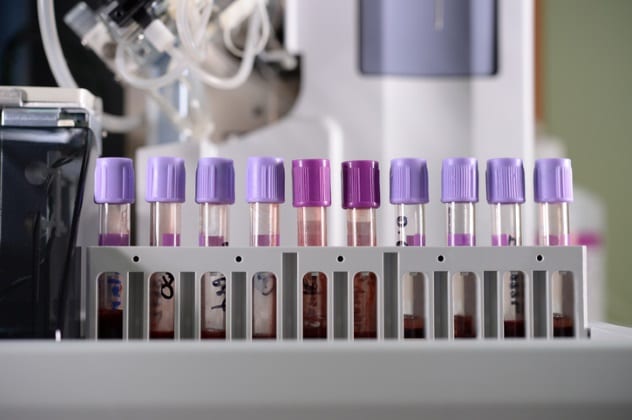
Several inquiries and protests have been made by experts within the legal system regarding the deplorable way that forensic evidence is being stored across the country. Shocking reports have been filed against crime labs, police departments, and sheriff’s offices concerning improper, underfunded, and outrageously inadequate forensic storage facilities. John Vasquez, who worked in evidence management for 25 years, admitted that during his career, he’d seen unlabeled evidence tossed into a closet, a hand grenade stored in a glass jar, boxes of corrosive chemicals leaking onto other boxes of evidence, and forensic samples stored in a clerk’s office next to employees’ food and drinks. He blamed the situation on the deplorable funding for storage, coupled with low pay for overworked evidence clerks.
The Austin Police Department, for example, stores at least 600,000 items, with approximately 60,000 new pieces of evidence being processed each year. Without perfect organization and updated records, things inevitably go missing, and when they do, defendants end up paying a very steep price. Joseph Sledge, for example, served 36 years for a crime in North Carolina, but he could have been out decades earlier if police hadn’t misplaced evidence from his trial. After 36 years of appeals, the evidence was finally located on the top shelf of a forensics storage room. DNA testing then proved that he wasn’t a murderer.
Forensic data storage is also a problem. A suspect’s laptop and cell phone can show evidence of a crime, motivation, or premeditation. Not only is there a huge volume of data collected for current investigations, but there is also a huge volume of digital forensics that must be stored indefinitely, in case of later appeals. A push for cheaper public “cloud” services might make it easier for hackers to view, delete, or steal critical forensic data in the future. In addition, the US Department of Justice revealed that more than 400,000 stored rape kits have not yet been tested across the country because of insufficient funding.
Rapists and murderers who aren’t caught are likely to strike again. When evidence is misplaced, improperly processed, or inadequately stored, everyone loses. Wrongfully convicted suspects, grieving family members, and the victims of violent criminals who should have been behind bars all suffer because of this ongoing forensic storage fail. Advocates from the Innocence Project are now working with the Department of Justice to develop a set of evidence storage guidelines that will hopefully be standardized across the nation in the future.[6]
4 Security Fail
2016
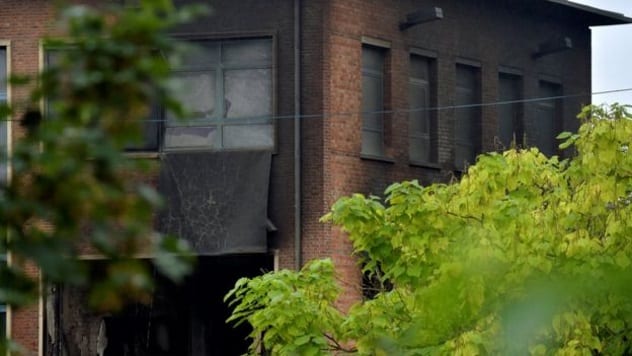
A series of arson attacks against forensic laboratories in Brussels has alerted the world to a huge security fail going on in Belgium. Six out of ten of the nation’s forensic laboratories have been badly burned by arsonists, with thousands of pieces of evidence ending up lost or damaged. Evidence to be used against European terrorists, including those suspected in the most recent attacks against Paris, has been burned, lost, or compromised during the fires. The National Institute of Criminology, considered the most important forensic testing center in Belgium, was also hit by arsonists in 2016.[7] More than 400 terrorist investigations may have been compromised by evidence lost in the fires.
Belgian prosecutors are angered over the lack of adequate security measures for scientific labs in their nation, especially since there was sufficient warning that the sites were vulnerable to attack. The DNA lab in Charleroi, recently struck by arsonists in 2016, had previously been attacked in 2001 and 2003, while the forensic laboratory in Ghent University had been targeted in 2005. In many cases, security for the labs consisted of nothing more than a few cameras and a wire fence. In the aftermath of successful attacks on Belgium’s forensic labs, European officials are now concerned about the security of their nuclear sites as well.
3 Hair Follicle Fail
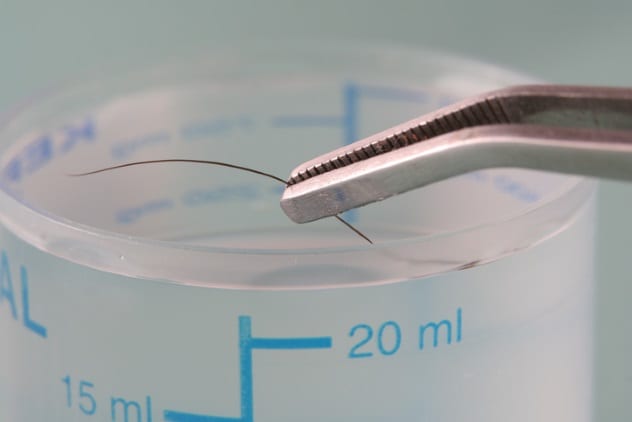
A press release given by the FBI in 2015 revealed one of the biggest fails in forensic science history. According to an examiner’s study, at least 90 percent of trial transcripts in their Microscopic Hair Comparison Analysis Review contained erroneous statements. The errors came to light when lawyers from the Innocence Project and the National Association of Criminal Defense Lawyers got together with members from the Department of Justice and the FBI to ensure more thorough testing and testimony. Before mitochondrial testing, the hair of a suspect was tested using microscopic analysis, which shows if the hair has a similar appearance to hair taken from the scene of a crime. Microscopic analysis can narrow down a suspect’s race, hair color, dye treatments, thickness, and many other characteristics, but it cannot determine if the hair is an exact match to a suspect. The newer mitochondrial testing of hair is more expensive, but it does exactly match hair to a suspect through DNA.
According to the Innocence Project, out of 329 wrongful convictions overturned by new DNA testing, 74 were due to erroneous microscopic hair evidence. Microscopic comparisons were very convincing to juries, especially when linked with testimony from forensic experts claiming that the hair “matched” a suspect. Defense attorneys and organizations like the Innocence Project are pushing for standardized use of DNA tests on hair, as well as more accurate testimony about how hair can be “similar,” but not necessarily “matched.” Instead of attempting to cover up this hairy forensic fail, the FBI and all legal organizations involved admitted their mistakes and took full responsibility for preventing them in the future. The government has since identified nearly 3,000 cases for review, based on questionable hair analysis testimony.[8]
2 Testimony Fail
1992
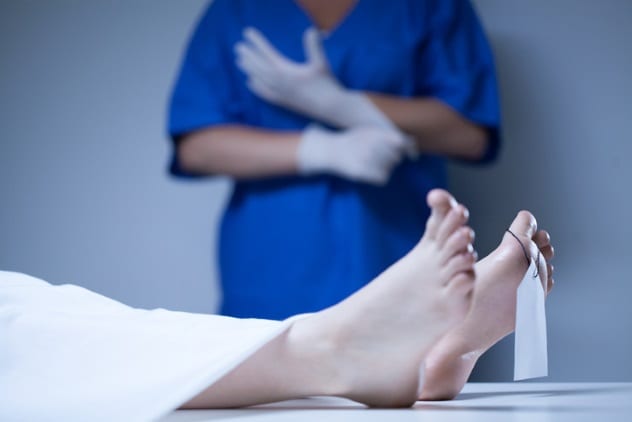
Dr. Ralph Erdmann had a reputation as an excellent witness to call to the stand—if you were a prosecutor. As a private contractor, he performed more than 3,000 autopsies in 41 jurisdictions spread out over West Texas. Defense attorneys became suspicious because Erdmann seemed to be able to supply prosecutors with whatever testimony they needed, without the proper testing to back up his reports. Prosecutorial misconduct complaints against several lawyers and police officers who worked regularly with Erdmann claimed that the lawmen bribed, threatened, or encouraged the doctor to provide whatever evidence was needed to secure a conviction.
Investigators exhumed seven bodies that Erdmann had testified about. All seven were examined and proved inconsistent with his findings. Preliminary testing revealed that the doctor had faked at least 100 of his autopsies, but that was just the tip of the iceberg. He estimated internal organ weight measurements for subjects that had never been cut open. He testified about the condition of a dead man’s spleen, not knowing that the spleen had been surgically removed years earlier. He listed one cause of death as pneumonia, even though a suspect later confessed that he’d shot the victim in the head. He reported another death as homicide caused by blunt force trauma, which was revealed to be an accidental drowning.[9]
Erdmann also testified about the forensic examination of a 14-year-old’s brain, but when the body was exhumed, police discovered that the skull had never been cut open. One of the examiner’s most aggravating mistakes was the loss of an entire head, which contained a bullet from the killer’s gun. Without the head, police couldn’t run forensic tests on the bullet or match it to their suspect. Erdmann later admitted that he had thrown the head away. A sample of 300 of his autopsy reports was examined by a panel of experts, who ruled that one-third of his patients had never been autopsied.
Erdmann pleaded no contest to seven felonies regarding false evidence and botched autopsies. He surrendered his medical license in August 1992, but the huge testimony fail he created is still causing ripples in the system.
1 Death Row Fail
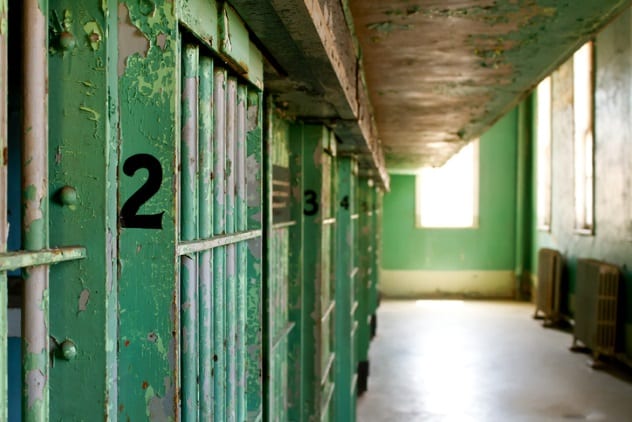
When forensics fail, it isn’t just the victims and their families who pay the price. According to the US Bureau of Justice Statistics, there were 1,442 death row executions in the US between 1977 and 2016. At least 140 people have been released from death row during that time because of forensic evidence which was tainted, flawed, or outright false. At least 18 of those prisoners have been proven innocent through updated DNA testing.[10] No one can say for certain how many innocent prisoners have been executed, died in prison, or served time for crimes that they did not commit. Frank Lee Smith, for example, died of cancer on death row, after serving 14 years for a rape and murder he did not commit. Unfortunately, DNA testing proved him innocent 11 months after he died. The real killer was later identified.
According to the National Registry of Exonerations, 2,030 people have been proven innocent through DNA testing. In total, those prisoners lost 17,690 years behind bars. Death row inmates, however, lose more than time. They lose lives. No one knows how many innocent men and women have been put to death because of faulty forensics or inaccurate experts. All we do know is that forensic fails can be deadly.
H.E. Coleman is an author, screenwriter, university student, and tarot reader. You can get free samples of her books here or watch free tarot videos on her YouTube channel here.
To read about times when forensics worked much better, check out Top 10 Murder Mysteries Finally Solved Using Forensics and 10 Notorious Historical Murders Solved Using Early Forensics.








